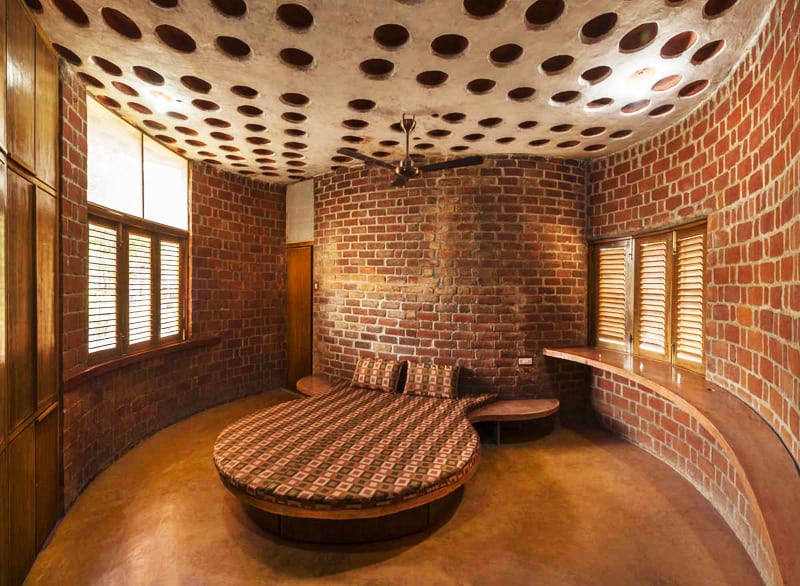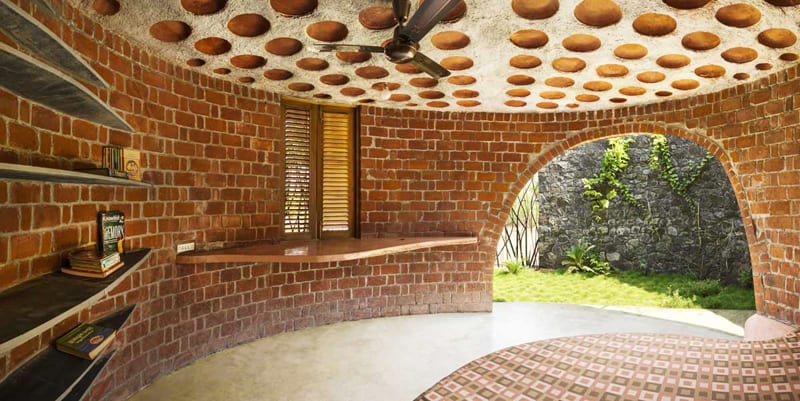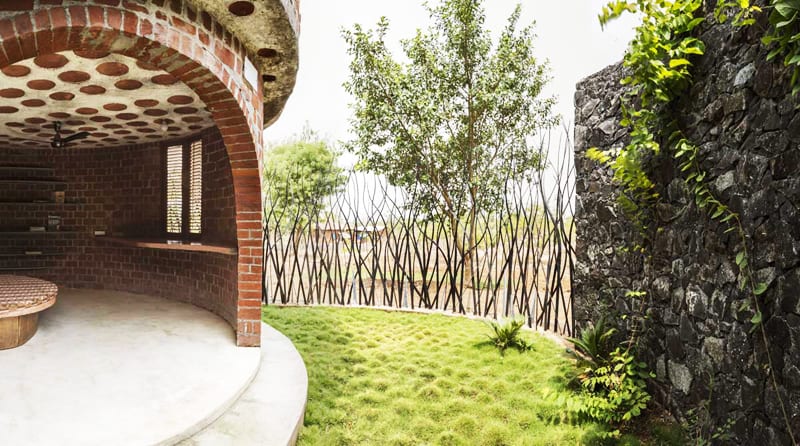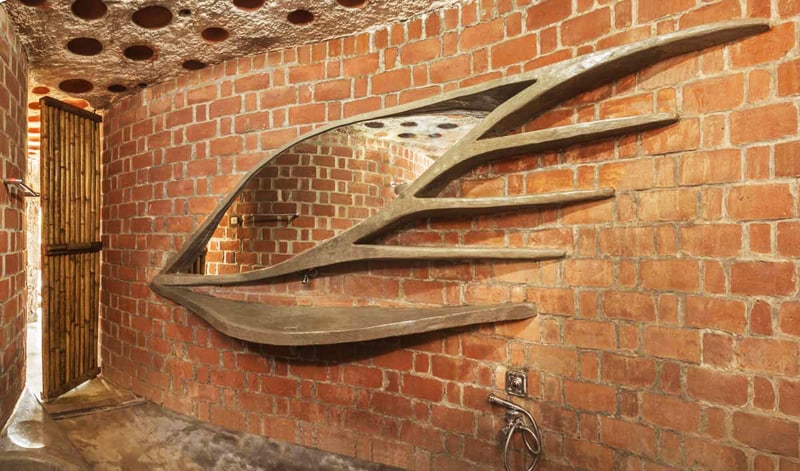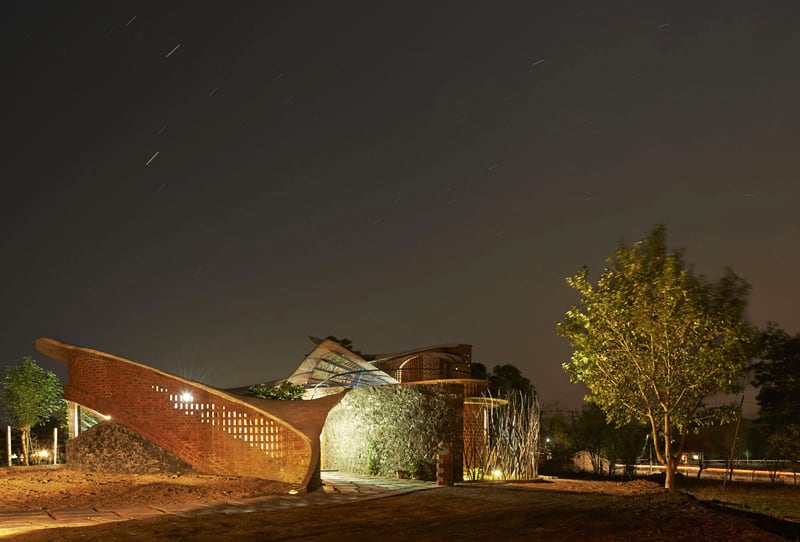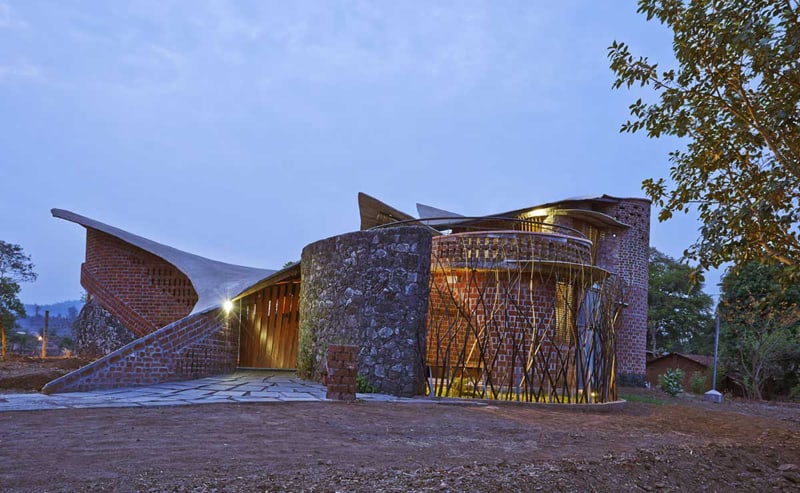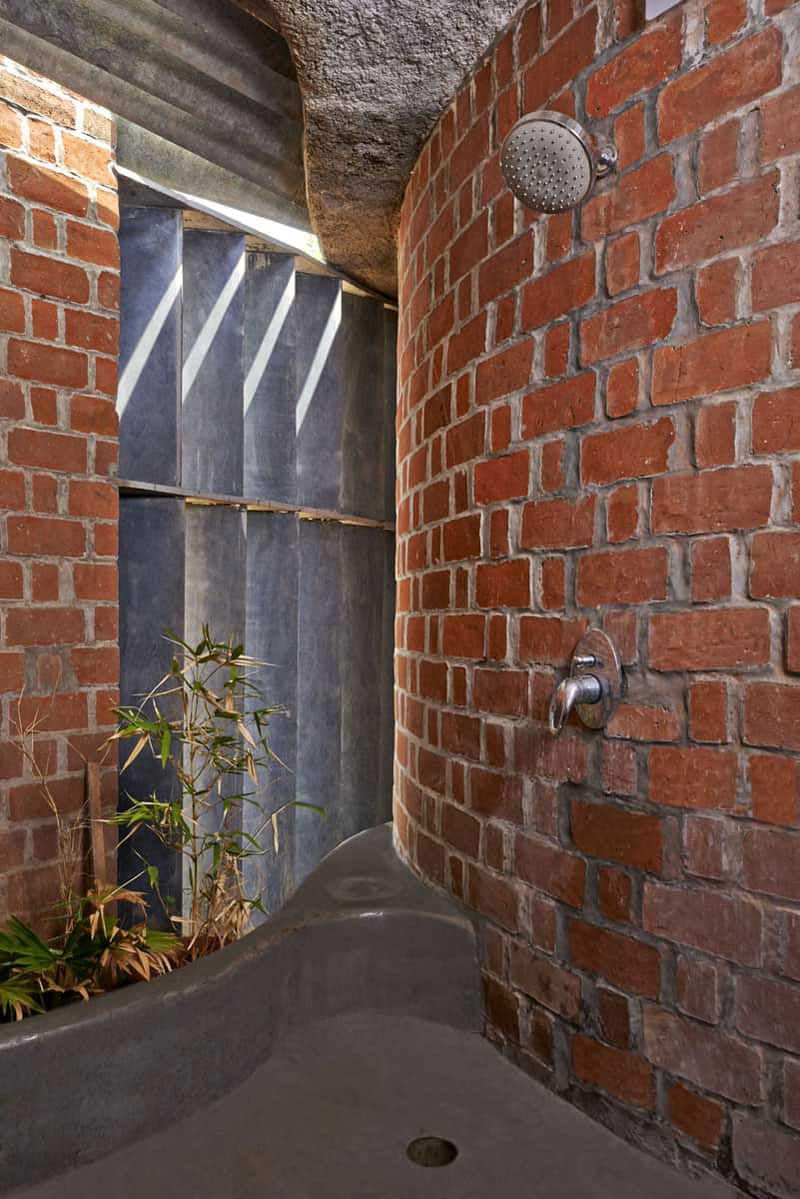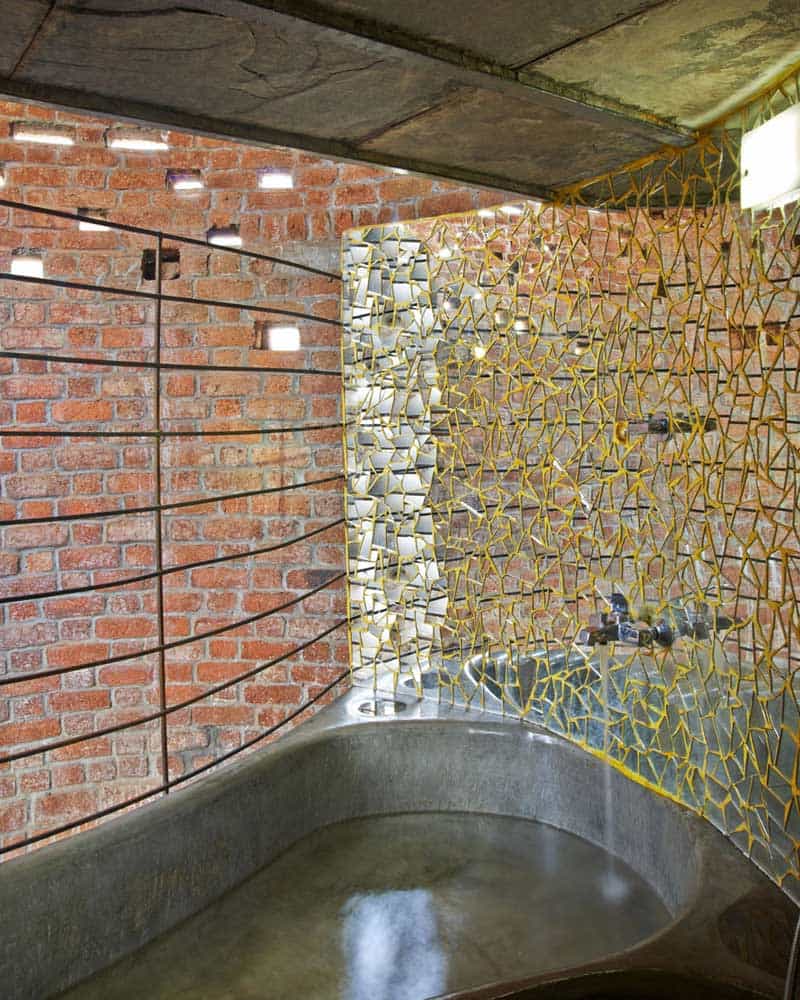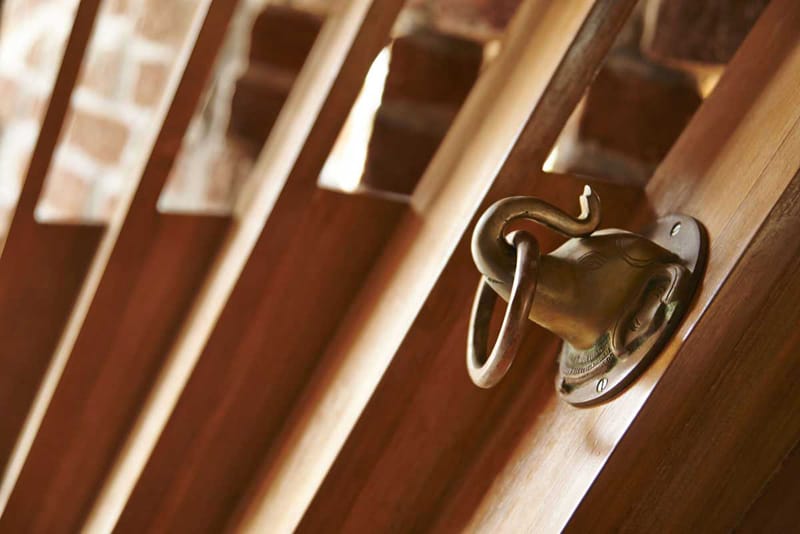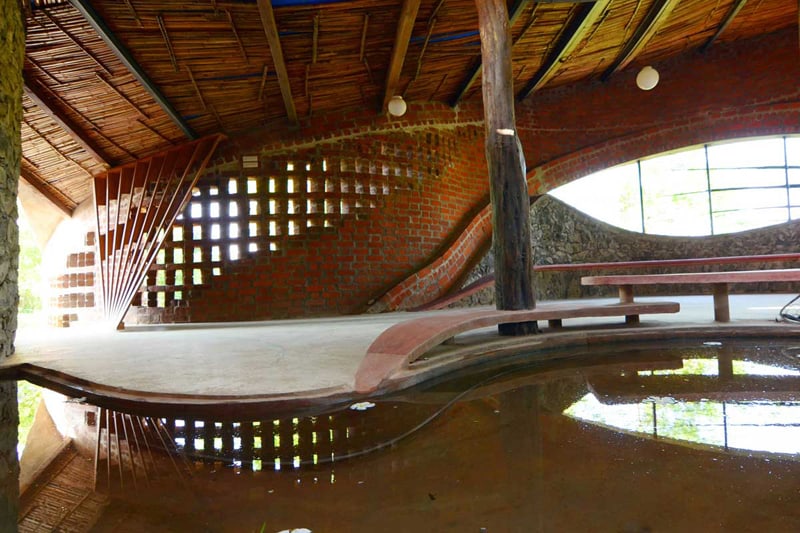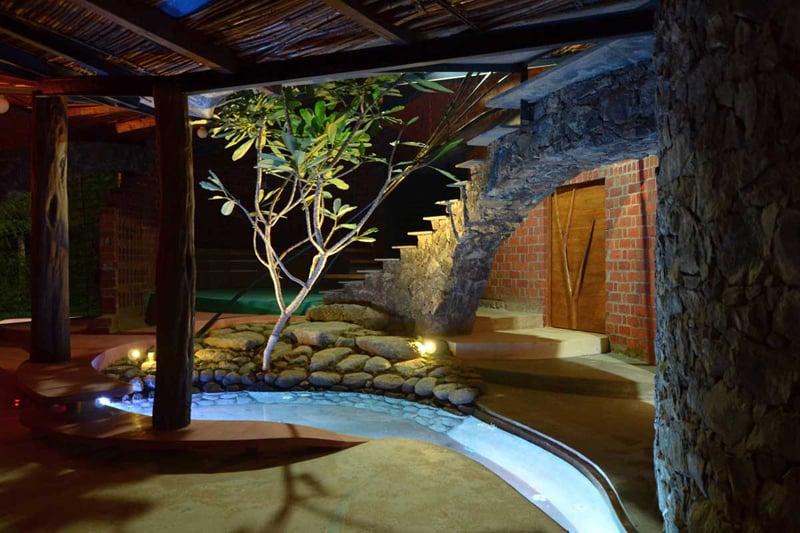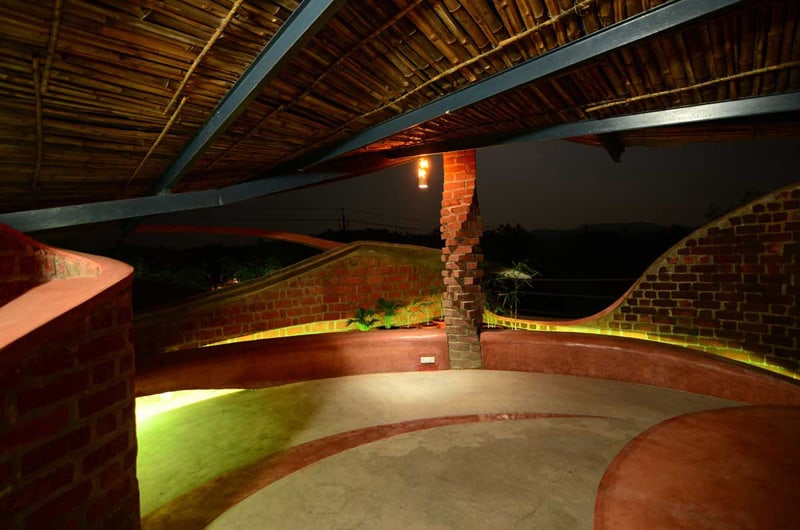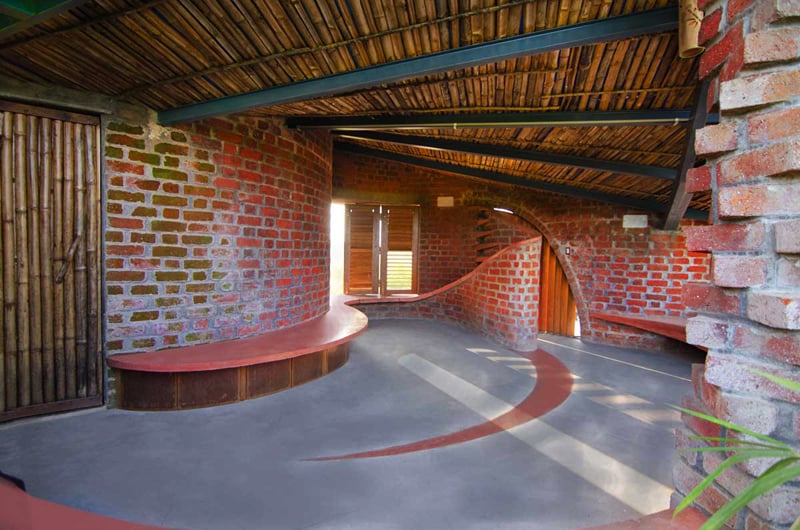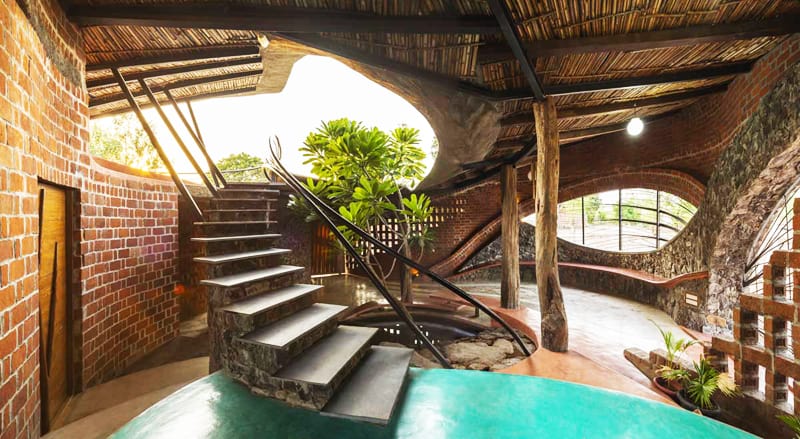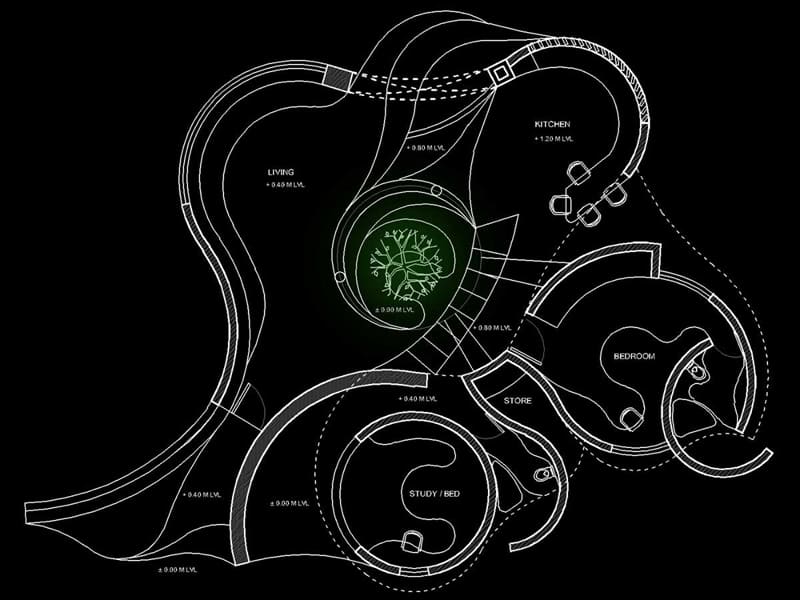Designed by istudio architecture, the Brick house has been inspired by both the philosophies and the works of Laurie Baker and Nari Gandhi. Each room flows into another, leading into a seamless space held by the central courtyard. Climatology and the solar path, along with jalis and arched openings have played an essential role to introduce light and wind into each interior space. Exposed materials, which give the entire house a very earthy feel and the construction techniques using rat-trap bond, filler slabs, arches have contributed to the low cost of the project. The Brick House, situated Mumbai,India, is a 2500 sq.ft. farmhouse set within hills and farms. The impact of the architecture of the structure is strong, always leading the viewer to a new observation, not allowing him to be complacent about the space which he occupies. An individualistic piece of architecture, the organic form emerges from the ground and flows into the skyline, following curved dips and peaks.
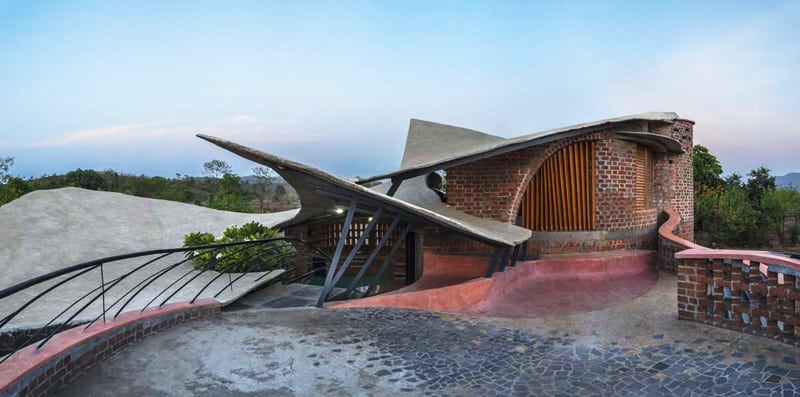
Each space flows into another along curved lines, leading into a seamless space held by the central courtyard. The observer begins his journey along the curved jali brick wall offering tantalizing glimpses of the interior, thus drawing him into dramatic compositions of light and shadows.
The stark contrast of a stone entrance wall against the exposed brick work lends itself to the realization of texture of both materials. As one enters into the structure, one is greeted by the soft sunlight falling to the central body of water and the coolness within the structure. The interior space is dominated by the two huge arches of brick and stone, opening to vistas of farms and hills. The furniture seems to rise and fall from the walls or floor dramatically leading one’s eyes to play of materials against each other.
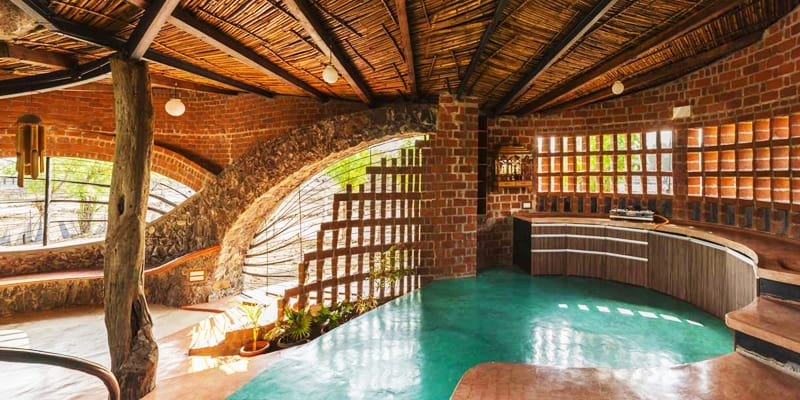
The House is constructed using brick in its naked form, giving an earthy feel to the built up space. The positions and sizes of the openings within the house are dictated by climatology, ensuring natural light, cross ventilation and passive cooling. The initial lot of quality bricks was called from the neighbouring state of Gujarat, and then we discovered a local brick kiln providing well-finished good quality bricks. Taking inspiration from architect Laurie Baker, we used techniques like rat-trap bonds for brickwork, filler slabs, brick jalis and built-in furniture. The rat-trap bond for brickwork helped in reducing the amount of material, provided natural insulation and provided for readymade conduiting for electrical work. The depth of the wall remained the 9? since the brick is placed on its 3? facia instead of the usual 4? facia. The brick arches allowed for large openings , which blended into the circular planning of the structure. Strategic use of jalis allowed for cross ventilation without providing for a window or glass shutters. This technique has been adopted from the local age-old custom of using jalis or small openings.

